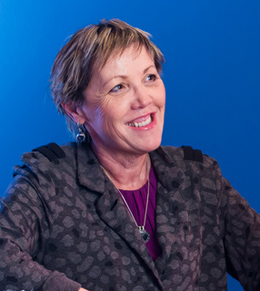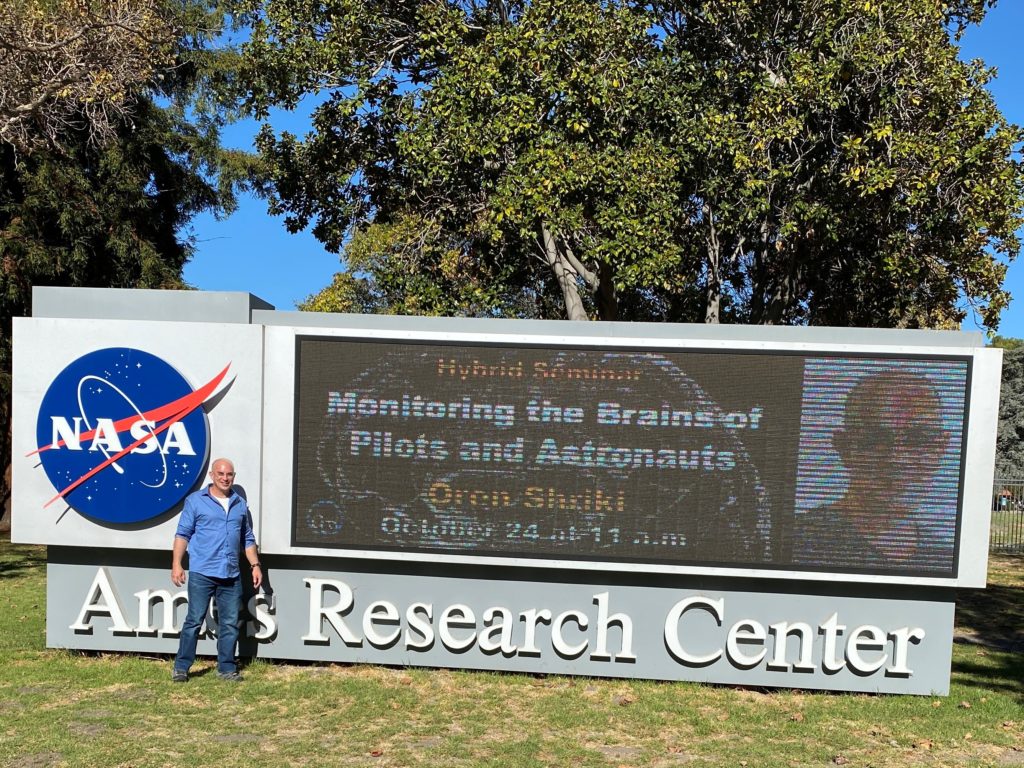
Improving Mobility with High-Tech Shoes
Improving Mobility with High-Tech Shoes
March 31, 2014
Business & Management, Medical Research, Robotics & High-Tech
For many years, Dr. Simona Bar-Haim worked as a physiotherapist focused on treating children with cerebral palsy (CP). In her forties, she decided on a life of research and earned her Ph.D. at BGU.
While working on her advanced degrees, she met a Russian-Jewish ex-cosmonaut who introduced her to chaos theory. The concept has fueled her research ever since.
Chaos theory is a scientific concept positing that some systems in nature behave in chaotic, non-linear ways, rather than working in a constant predetermined manner.
To transfer the idea from the terrain of physics, for example, the healthy heart can respond to the Desert & Water Research by varying its beat based on activity level, temperature, emotions, and so on.
“I started doing studies on how to use chaos theory to rehabilitate,” Dr. Bar-Haim recounts.
“My idea was that the brain can choose how to do something. If it works in a chaotic way when you’re healthy, why not challenge disabled people in a chaotic way so the brain develops its own solution, rather than having a therapist train the person to do things as we expect them to?”
In 2012, Bar-Haim established the Laboratory for Rehabilitation and Motor Control of Walking at BGU. Her research is based on the concept of error-inducing motor learning. “To rehabilitate walking we induce errors to the brain and stress it so it will recover its plasticity.”
But beyond looking into the brain to understand the motor control of walking, she felt a practical imperative. “We also have a clinical track to look into real functional improvements in the lives of children with CP so they can walk out of the lab and walk better at home, in school, in their everyday lives.”
Dr. Bar-Haim knows from experience that cerebral palsy is a pressing concern. In much of the Middle East, where resources are scarce, many children do not receive early treatment and therefore languish at home with no services.
And for teenagers and adults with CP, services are far less available. Accordingly, with funding from USAID and United Cerebral Palsy Research Foundation, she developed a research project to promote physically active lifestyles in children and teenagers with CP in the Middle East, better known as CP-PALS.
More than eight years ago, Dr. Bar-Haim created a coalition of facilities in Jordan, Morocco, the Palestinian Authority, and other countries to encourage treatment in the Arab world and support her experiments helping teenagers with CP. View an Israel21C video about this cross-border cooperation >>
In addition to enabling her to evaluate different therapeutic interventions and share information, this network helps her to fulfill personal priorities: advocating for better quality of life for the disabled, and empowering women in Arab countries. “I try to help my colleagues study, and I encourage them to participate in the project,” she notes.
The group performed preliminary studies by monitoring activity levels of hundreds of CP teenagers. To document how the teens spent their time, they wore small accelerometers for four days. This study revealed that many of them were sitting at home all day because there were too many stairs to maneuver, or other factors.
When armed with data, Bar-Haim says, “You can go to the decisionmakers and tell them they must change their policies. I explained that it was important to help these teenagers become more active participants in their society and community.” She found the policy-makers very receptive.
Testing therapies to improve locomotion is the crux of the CP-PALS project. “The challenge is to find ways to train a damaged brain,” Bar-Haim explains. Initially, she used standard exercise equipment to treat CP youngsters, providing unpredictable movements to which they had to respond. The results were encouraging.
Two years ago a new piece of research equipment became available: a split-tread treadmill. Each side can operate at different speeds and mimic different terrains. This technology perfectly suits Bar-Haim’s chaos theory strategy. Given a changing, random situation, the brain in effect bypasses its accustomed motor controller.
“Every step is a surprise. In this training, the brain finds its own way to function, so the person can much more easily retain what it learns and transfer it to all the other Desert & Water Researchs.”
Results from the research are promising. “We found out that this training helps CP people with brain damage walk better and gain more mobility in a much shorter time than traditional therapy.” After six months of training, a large number of the young people will be brought in from various rehab centers to Soroka University Medical Center for MRI scans. Part of the data is already being analyzed.
Dr. Bar-Haim observes that the treadmill training provides theories that promote better understanding of the brain. “Using the split-tread treadmill showed us that the motor control of walking is not in one area of the brain. Several different parts of the central nervous system are responsible for walking. This was a big surprise. We wouldn’t have guessed it without the technology of the treadmill.”
The team is in the middle of analyzing data and working with more groups, but the collaborators have no doubt that the approach works. “We’re 100 percent sure we’re helping these children,” Dr. Bar-Haim says. “They come into the lab and go out walking much better. They are happy and their parents are happy!” Some of the teenagers move on to play soccer, she notes.
Results have been published in major journals. In June, the project was exhibited at Israel’s Presidential Conference in Jerusalem, a prestigious showcase for leading brain study projects. View this video presented at this conference >>
Research is also under way to apply the system to older people who are subject to recurring falls, with similarly notable results.
While Dr. Simona Bar-Haim has pioneered the integration of physiotherapy with brain science, she is happy to say that she is no longer the only one doing so. “The rehab field is in the middle of a revolution,” she believes.
Less than a decade ago, technological approaches were not used in physical therapy and practitioners were reluctant to change their 70-yearold hands-on methods. “But now you must use evidence-based practice. My vision is for the rehab community to join in and use all these brain studies and bioengineering research— all this knowledge—then we will make major ‘steps’ forward.
”Start-up companies are pushing the rehab revolution, and Bar-Haim’s company, “Step of Mind,” is part of that movement. She invented “Re-Step,” a shoe for training braindamaged people with impaired mobility. It changes the angle of the walking surface in unpredictable ways, forcing the wearer to practice walking on variable surfaces. As with the treadmill, the brain is encouraged to find new solutions to its challenges.
Rather than selling the shoes, Step of Mind gives them to clinics on a pay-per-use basis and shares the profits. “This lets us lead the use of technology in small clinics, not just in laboratories or big rehabilitation centers,” she says.




